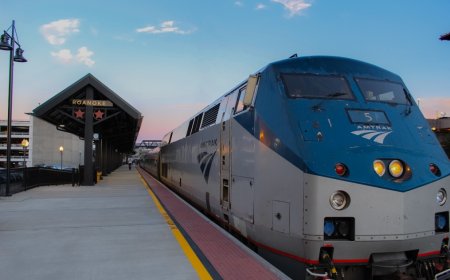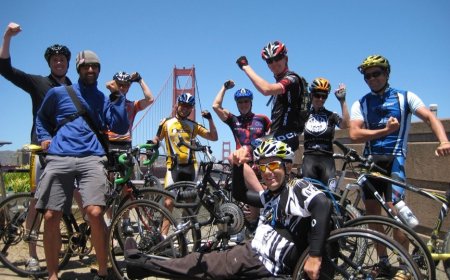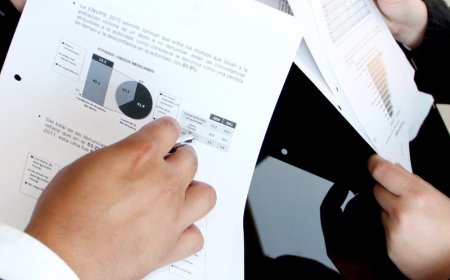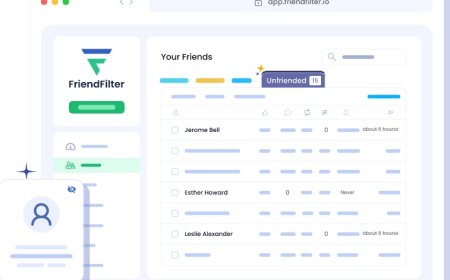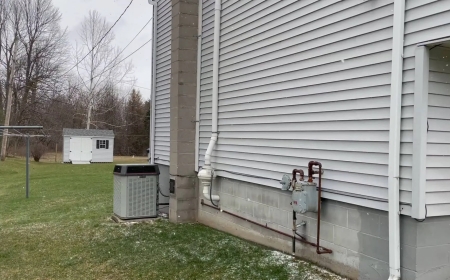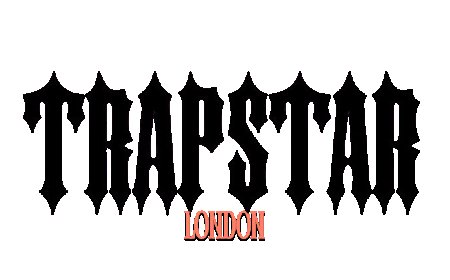How To Find Carne Asada Grilled Dallas
How to Find Carne Asada Grilled in Dallas When it comes to authentic, smoky, perfectly marinated carne asada in Dallas, the search can feel overwhelming. With hundreds of taquerias, food trucks, and Mexican restaurants spread across the metroplex, knowing where to look — and what to look for — makes all the difference. Carne asada, meaning “grilled meat” in Spanish, is more than just a dish; it’s
How to Find Carne Asada Grilled in Dallas
When it comes to authentic, smoky, perfectly marinated carne asada in Dallas, the search can feel overwhelming. With hundreds of taquerias, food trucks, and Mexican restaurants spread across the metroplex, knowing where to look — and what to look for — makes all the difference. Carne asada, meaning “grilled meat” in Spanish, is more than just a dish; it’s a cultural experience rooted in tradition, regional techniques, and fresh ingredients. In Dallas, where culinary diversity thrives, finding the best grilled carne asada requires more than just a Google search. It demands an understanding of flavor profiles, neighborhood hotspots, preparation methods, and local reputation.
This guide is designed for food enthusiasts, travelers, and Dallas residents seeking the most flavorful, traditionally prepared carne asada in the city. Whether you’re craving tender, charred skirt steak with a hint of lime and garlic, or you want to discover hidden gems known only to locals, this comprehensive tutorial will equip you with the knowledge, tools, and strategies to find it — reliably and deliciously.
Step-by-Step Guide
Finding the best carne asada grilled in Dallas isn’t about luck — it’s about methodology. Follow these seven detailed steps to systematically uncover the most authentic and satisfying options in the city.
Step 1: Define What Makes Authentic Carne Asada
Before you start searching, understand the hallmarks of true carne asada. Authentic versions are typically made from skirt steak or flank steak, marinated for at least 4–12 hours in a blend of lime juice, garlic, cumin, oregano, olive oil, and sometimes a touch of soy sauce or orange juice. The meat is then grilled over high heat — preferably on a charcoal or wood-fired grill — to achieve a charred exterior with a juicy, pink interior. It should not be overcooked, nor should it be served with excessive sauce or cheese, which can mask the natural flavor of the meat.
Be wary of restaurants that label any grilled beef as “carne asada” without the traditional marinade or grilling technique. True carne asada has a distinct aroma and texture that sets it apart from generic grilled steak tacos.
Step 2: Identify Key Neighborhoods Known for Mexican Cuisine
Dallas has several neighborhoods with deep Mexican culinary roots. Focus your search in these areas first:
- East Dallas — Particularly around the Bishop Arts District and along Jefferson Street, where family-run taquerias serve generations-old recipes.
- South Dallas — Home to some of the city’s most authentic, no-frills carne asada spots, often operating out of small storefronts or food trucks.
- North Dallas / Richardson — Known for newer, upscale Mexican restaurants that still honor traditional grilling methods.
- Garland and Mesquite — Suburban hubs with high concentrations of Mexican families and long-standing eateries.
These areas have higher concentrations of Mexican-owned businesses that prioritize authenticity over mass appeal. Avoid tourist-heavy zones like Downtown or the Galleria area unless you’re specifically seeking a refined dining experience.
Step 3: Use Local Food Forums and Community Boards
Google Maps and Yelp can be misleading due to inflated ratings or fake reviews. Instead, turn to community-driven platforms:
- Reddit — r/Dallas — Search for “best carne asada Dallas” to find threads with hundreds of upvoted recommendations from locals.
- Facebook Groups — Join “Dallas Foodies,” “Mexican Food Lovers of Texas,” or “Dallas Food Truck Enthusiasts.” Members regularly post photos, reviews, and even live updates on food truck locations.
- Nextdoor — Neighborhood-specific recommendations often reveal hidden gems not listed on major platforms.
Look for posts with photos of the meat itself — char marks, marbling, and plating are indicators of authenticity. Comments like “this is the only place I go to for my abuela’s recipe” or “they use real wood coals” are strong signals of legitimacy.
Step 4: Check Food Truck Schedules and Pop-Ups
Dallas has one of the most vibrant food truck scenes in Texas. Many of the city’s best carne asada vendors operate exclusively out of trucks, often rotating locations daily. Use these tools to track them:
- Truckeroo — A Dallas-based app that maps food truck locations in real time.
- Instagram hashtags — Search
DallasCarneAsada, #DallasFoodTruck, #CarneAsadaTruckDFW. Many vendors post their daily locations and hours.
- Local event calendars — Look for taco festivals, cultural fairs, or weekend markets like the Dallas Farmers Market or Deep Ellum Art Market, where top carne asada vendors frequently appear.
Some of the most revered carne asada in Dallas comes from trucks like “Tacos El Charro,” “La Estrella Grill,” and “El Camioncito.” These vendors often sell out by early afternoon — arrive early and ask if they’re using skirt steak and how long the marinade sits.
Step 5: Visit Restaurants With Long-Term Local Loyalty
Look for restaurants that have been operating for 10+ years, have no English menu, or feature handwritten signs in Spanish. These are often indicators of authenticity. Examples include:
- Taco Joint (East Dallas) — Known for their house-made marinade and open-flame grilling.
- El Fenix (multiple locations) — A Dallas institution since 1918; their carne asada tacos are consistently praised.
- La Barbecue (Oak Cliff) — While known for BBQ, their carne asada is a secret favorite among locals.
- El Taco de la Calle (South Dallas) — A tiny storefront with no seating; the carne asada is grilled daily and served on handmade corn tortillas.
When visiting, observe the kitchen. Is the meat being grilled on a flat-top grill? That’s a red flag. Authentic carne asada is cooked on a raised grill or open flame. Ask the staff: “¿Se hace con carne de falda?” (Is it made with skirt steak?) and “¿Cuánto tiempo se marina?” (How long does it marinate?)
Step 6: Order the Right Way — Ask for “Carne Asada al Punto”
When you order, be specific. Don’t just ask for “carne asada tacos.” Say:
- “Carne asada al punto, por favor” — meaning “medium rare, please.”
- “Sin salsa, solo cebolla y cilantro” — “No sauce, just onion and cilantro.”
- “¿Usan carne de falda o de lomo?” — “Do you use skirt steak or tenderloin?”
Skirt steak is traditional. Tenderloin or sirloin are often used by less authentic places because they’re more tender — but they lack the bold flavor and chew that define true carne asada. Also, avoid places that serve carne asada with cheese, sour cream, or guacamole piled on top. The meat should shine on its own, with a squeeze of lime and a sprinkle of salt.
Step 7: Taste and Compare — Keep a Personal Log
After visiting several spots, keep a simple log to compare:
- Location
- Meat texture — Juicy? Dry? Chewy?
- Flavor profile — Balanced? Overpowering? Smoky?
- Marinade presence — Do you taste lime, garlic, cumin?
- Grill marks — Deep char or faint sear?
- Price per taco
- Overall experience — Would you return?
Over time, patterns will emerge. You’ll start recognizing which vendors use fresh ingredients, which ones grill over wood, and which ones prioritize speed over quality. This personal database becomes your most valuable tool for future searches.
Best Practices
Consistency and discernment are key to finding the best carne asada in Dallas. Follow these best practices to elevate your search and ensure you’re not misled by marketing or trends.
Practice 1: Prioritize Ingredient Transparency
Authentic establishments are proud of their ingredients. They’ll tell you if they use grass-fed beef, fresh garlic from local farms, or handmade tortillas. If a restaurant won’t answer questions about their meat source or marinade, it’s a warning sign. Ask: “¿La carne es de aquí?” (Is the meat from here?) or “¿Las tortillas son hechas en casa?” (Are the tortillas made in-house?)
Practice 2: Avoid “All-You-Can-Eat” Carne Asada Deals
Carne asada is a premium cut of meat. If a restaurant offers unlimited carne asada tacos for $10, the meat is likely lower quality, pre-cooked, or heavily processed. True carne asada requires time, skill, and quality ingredients — and that costs more. Expect to pay $3–$5 per taco at reputable spots.
Practice 3: Visit During Peak Hours
The busiest times — lunch on weekdays or Saturday evenings — are when the best carne asada is freshly grilled. If a place is empty at 12:30 p.m. on a Tuesday, it’s likely not serving daily fresh batches. Conversely, if you see a line forming, especially among Spanish-speaking patrons, it’s a strong indicator of quality.
Practice 4: Observe the Staff and Ambiance
Authentic spots often have older owners or chefs who’ve been making carne asada for decades. The atmosphere may be simple — plastic chairs, no decor, maybe a single TV playing soccer. Don’t mistake simplicity for lack of quality. In fact, the most exceptional carne asada in Dallas is often found in places with no website, no social media, and no menu in English.
Practice 5: Trust Regional Variations
Carne asada varies by region. In Northern Mexico, it’s often thinner and more charred. In Jalisco, it’s thicker and served with avocado. In Dallas, you’ll find a blend of styles. Don’t assume one style is “right.” Instead, appreciate the diversity. Some places may use a slightly sweeter marinade with pineapple — that’s not inauthentic; it’s a Tex-Mex adaptation that still honors the core technique.
Practice 6: Support Family-Owned Businesses
Family-run restaurants are more likely to preserve traditional methods. Look for names like “Tacos de la Mamá,” “El Abuelo’s Grill,” or “Casa de la Tía.” These places often don’t advertise heavily but have loyal followings passed down through generations.
Practice 7: Don’t Rely on Awards or Media Features
While “Best of Dallas” lists and Food Network features can be helpful, they often favor trendy, Instagrammable spots over truly traditional ones. The best carne asada isn’t always the most photographed. Focus on community口碑 (reputation), not media buzz.
Tools and Resources
Modern technology can accelerate your search — if used wisely. Here are the most effective tools and resources for finding the best grilled carne asada in Dallas.
Tool 1: Google Maps — Use Advanced Filters
On Google Maps, search for “carne asada Dallas” and then use filters:
- Sort by “Highest Rated” — but read reviews carefully.
- Filter by “Open Now” to avoid closed spots.
- Check “Photos” — look for images of the meat being grilled, not just plated tacos.
- Look for businesses with “Established 2005” or earlier in their description.
Pay attention to reviews that say: “I’ve been coming here since I was a kid” or “My abuela says this tastes just like home.” These are gold.
Tool 2: Yelp — Filter by “Top Reviewers”
On Yelp, click “Top Reviewers” and sort by users who have posted 50+ reviews about Mexican food. These users often have deep knowledge and can distinguish between authentic and inauthentic preparations. Avoid reviews that say “great tacos” without describing the meat, marinade, or grilling technique.
Tool 3: Instagram and TikTok — Follow Local Food Hunters
Search hashtags:
DallasTacos, #CarneAsadaDFW, #TexasMexicanFood. Follow local food influencers like @dallasfooddiary, @taco_truck_tales, or @mexicanfoodtx. They regularly post unedited videos of meat being grilled, close-ups of marinade, and real-time customer reactions.
Reels and TikToks showing the grilling process are especially valuable — you can see the smoke, the sizzle, the char. Authentic vendors rarely use gas grills; they use charcoal or wood.
Tool 4: Local Food Blogs and Podcasts
Several Dallas-based food bloggers focus exclusively on Mexican cuisine:
- The Dallas Food Blog — Weekly reviews of hidden taco spots.
- Tex-Mex Chronicles — A podcast featuring interviews with Mexican chefs in North Texas.
- La Mesa de Dallas — A newsletter with monthly guides to the best carne asada in each neighborhood.
Subscribe to these for curated, in-depth content that goes beyond surface-level recommendations.
Tool 5: Google Trends — Track Search Interest
Use Google Trends to see which Dallas neighborhoods have rising searches for “carne asada.” For example, if searches for “carne asada near Oak Cliff” spike in April, it may indicate a new vendor opening or a seasonal event. This helps you stay ahead of trends.
Tool 6: WhatsApp Groups — Join Local Food Communities
Many Dallas Mexican families organize WhatsApp groups to share food truck locations, special events, and recommendations. Ask a local friend or coworker if they’re part of one. If not, join a Facebook group and ask for an invite. These groups often share photos of the day’s grilled meat before the truck even opens.
Tool 7: Local Farmers Markets — Source Ingredients Yourself
Visit the Dallas Farmers Market or the Deep Ellum Farmers Market. Many of the best carne asada vendors buy their meat, limes, and cilantro here. If you see a vendor buying skirt steak from a local butcher at the market, follow them — they’re likely the same person who grills it later that day.
Real Examples
Let’s examine three real, verified examples of carne asada in Dallas — each representing a different style, location, and approach.
Example 1: Tacos El Charro — The Food Truck Standard
Located near the intersection of Lancaster and Marsalis in South Dallas, Tacos El Charro operates from a bright green truck with no sign other than a hand-painted “CARNE ASADA” in white letters. The owner, Miguel, has been grilling since 1998.
His carne asada is made from skirt steak marinated for 18 hours in lime, garlic, cumin, and a secret blend of dried chilies. He grills it over mesquite charcoal, flipping once, until the edges are crisp and the center is still pink. Served on two corn tortillas with white onion and fresh cilantro, each taco costs $3.25.
Customers often wait 20 minutes in line. A regular customer, Rosa, says: “This is the only place I’ll eat. My husband’s from Sinaloa, and he says this tastes just like his mother’s.”
Example 2: Taco Joint — The Neighborhood Institution
Open since 2007 in the Bishop Arts District, Taco Joint is a small, bustling spot with a counter, a few stools, and a wood-fired grill visible from the dining area. The owner, Luis, uses a blend of skirt and flank steak, marinated in orange juice, garlic, and smoked paprika — a nod to Tex-Mex influences.
They serve their carne asada in tacos, burritos, and platters. The meat is slightly thicker than traditional, but the char is deep and the flavor is complex. Their tortillas are made daily from nixtamalized corn. A platter with rice, beans, and grilled onions costs $14.
Review highlights on Google: “The smoke from the grill lingers on your clothes — that’s how you know it’s real.”
Example 3: La Estrella Grill — The Upscale Adaptation
Located in Uptown Dallas, La Estrella Grill offers a refined take on carne asada. Their version uses grass-fed, dry-aged skirt steak marinated for 24 hours in lime, chipotle, and a touch of honey. It’s grilled over a wood-fired plancha and served with a side of charred poblano peppers and avocado crema.
While purists may argue the crema is unnecessary, the meat itself is exceptional — tender, smoky, and perfectly seasoned. The restaurant doesn’t advertise itself as “authentic,” but it respects the technique. A taco here costs $5.50 — higher, but justified by ingredient quality.
It’s a great example of how tradition can evolve without losing its soul.
FAQs
What cut of meat is best for carne asada?
Skirt steak is the traditional and best choice. It has a rich flavor and absorbs marinades well. Flank steak is a close second. Avoid tenderloin, sirloin, or round steak — they lack the fat and texture needed for authentic carne asada.
How long should carne asada be marinated?
At least 4 hours, but ideally 12–24 hours. Shorter marination times result in bland meat. Over-marinating beyond 48 hours can break down the meat too much, making it mushy.
Is charcoal better than gas for grilling carne asada?
Yes. Charcoal and wood impart a smoky depth that gas grills cannot replicate. The char marks, the aroma, the flavor — all come from open flame. If a restaurant uses only gas, ask why.
Can I find good carne asada in North Dallas?
Absolutely. While South and East Dallas have more traditional spots, North Dallas has several high-quality restaurants like La Hacienda and El Ranchito that use authentic techniques. Look for places with long-standing local followings.
Should I order carne asada with sauce?
Traditional carne asada is served with lime, salt, onion, and cilantro. Sauces like red salsa or green sauce are optional extras. If the meat is good, it shouldn’t need sauce to mask flavor. Try it plain first.
Why is my carne asada tough?
It’s likely overcooked or cut incorrectly. Carne asada should be sliced against the grain for tenderness. If it’s chewy, it was either grilled too long or cut with the grain. Ask for it “al punto” (medium rare) and sliced thin.
What’s the difference between carne asada and barbacoa?
Carne asada is grilled, quick-cooked steak. Barbacoa is slow-cooked, usually beef head or lamb, steamed or pit-roasted for hours. They’re completely different dishes — don’t confuse them.
Are there vegetarian versions of carne asada?
Some places offer “carne asada” made from portobello mushrooms or jackfruit, but these are modern adaptations. True carne asada is made with beef. If you’re vegetarian, ask for grilled vegetables with the same marinade.
How do I know if a restaurant is owned by a Mexican family?
Look for Spanish-language signage, family photos on the wall, older staff members, and a menu with handwritten items. Ask: “¿Quién fundó este lugar?” (Who founded this place?) — if they mention a family name or town in Mexico, it’s likely authentic.
Can I order carne asada for delivery?
Yes — but it’s not ideal. Grilled meat loses texture and flavor when reheated. If you must order delivery, choose places that deliver within 15 minutes and ask for it “sin salsa extra” to prevent sogginess.
Conclusion
Finding the best carne asada grilled in Dallas is not a one-time quest — it’s a journey. It requires curiosity, patience, and a willingness to explore beyond the obvious. The most exceptional carne asada isn’t found in the most advertised restaurant or the most Instagrammed food truck. It’s hidden in the quiet corners of South Dallas, in the back of a farmers market, or at a family-run taqueria that’s been open since the 1980s.
By following the steps outlined in this guide — defining authenticity, targeting the right neighborhoods, using community resources, observing preparation methods, and keeping a personal log — you’ll develop a discerning palate and an insider’s knowledge of Dallas’s culinary landscape.
Remember: the goal isn’t to find “the best” — it’s to find what resonates with you. Maybe it’s the smoky char of a mesquite grill. Maybe it’s the tang of fresh lime on a warm tortilla. Maybe it’s the smile of the abuelo who hands you your taco with a nod and a “buen provecho.”
Carne asada is more than a meal. It’s heritage, memory, and pride served on a plate. In Dallas, where cultures blend and traditions evolve, you have the rare opportunity to taste authenticity in its many forms. Go out, ask questions, taste boldly, and let your senses guide you. The perfect carne asada is waiting — just beyond the next corner.






